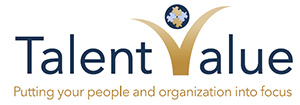Easing New Hires into the Job Improves Productivity
Most employers spend a lot of time on the recruiting and hiring process:
- Finding qualified applicants
- Interviewing,
- Checking references
- Creating an acceptable offer.
But, the process does not end once the new employee has been hired.
A smooth assimilation into the new job is a primary ingredient for reducing employee performance problems and turnover. However, competing with this goal is the need to complete all the necessary new hire paperwork to ensure compliance with today’s maze of employment laws.
Unfortunately, too many organizations become overwhelmed by the paperwork demands and neglect the fundamentals of the orientation process. A better approach is to focus on welcoming and integrating new hires and on laying the groundwork for improved performance and retention. Below are five tips on how to coordinate orientation and new hire legal compliance into an organized process.
* Engaging a New Team Member *
An effective orientation program makes the new hire feel comfortable and introduces the organization’s culture, supervisors, coworkers, and work expectations. New employees who get a positive first impression and “buy into” your culture are more likely to be loyal, cooperate with coworkers and supervisors, and take a personal interest in the organization’s success. While each employer must adjust its approach based on size and management philosophy, the following seven steps provide a guideline to help you cover the right bases.
1. Make new employees feel welcome and part of the group.
Little things can go a long way to help them feel comfortable as they enter a strange environment. For example, make sure the new employee’s workspace is ready and that keys, badges, and any necessary entry codes are provided. Assign an e-mail address and computer password, if applicable, and add the employee to the internal telephone extension lists. In addition, have top officials at the highest possible level take the time to meet every new hire, or at least send a personal welcome note.
2. Provide an overview of all operations.
Include a review of the corporate history and organizational chart, a discussion of products and services, and a tour of the facilities.
3. Communicate information about the organization’s goals and culture.
Studies show that retention rates improve when employees feel informed about, and buy into, corporate plans and goals.
4. Provide detailed information about the new hire’s position.
New employees should be given a clear outline of their job description, title, and duties. In addition, the supervisor should provide written training and performance goals with appropriate benchmarks and expected completion dates.
5. Assign new employees meaningful work.
Many employers make the mistake of giving new employees “busy work” when they first arrive to “ease” the entry into the job. This approach often backfires by making the new hire feel unchallenged. Instead, assign meaningful work as soon as possible.
TalentValue has integrated the Orientation and On-boarding process into a smooth and seamless process. See your TalentValue Advisor for ideas on how to make this work for your company.
